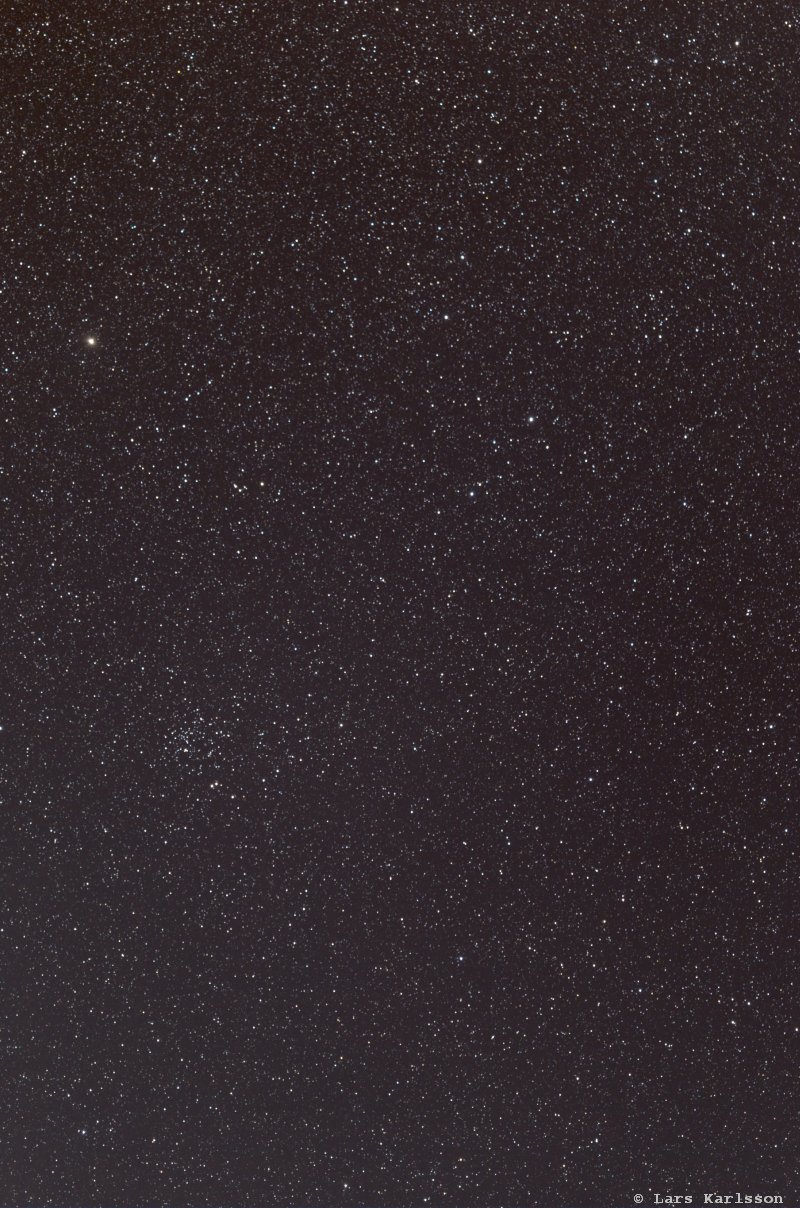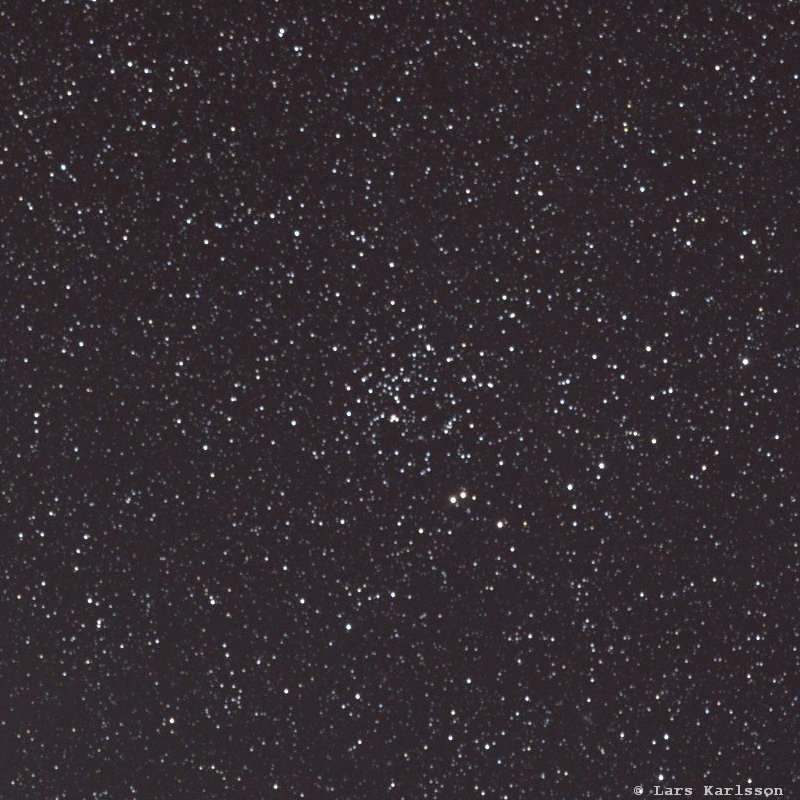| Object : | NGC 752 |
| Coordinates/Direction : | RA: 01h57m, DEC: +37o47' |
| Object size : | - |
| Object magnitude : | 5.7 |
| More to know : |
Wikipedia:
https://en.wikipedia.org/ wiki/ NGC 752 |
| Exp. time : | 39x60 seconds, iso1600 |
| Image process tool : | AstroImageJ, Fitswork, Irfanview |
| Processing : | crop, level, flat cal |
| Weather : | clear |
| Comment : |
You see the cluster to the left and a bit down from center.
It has 60 stars that you can see in a small telescope.
It is 1600 light years from Earth.
The bright star above NGC 752 is a double star in the constellation Andromeda.
Look at the full resolution image (click on the image above) and you will see a lot of other objects, compare with a star map.
I had a lot of problem with the mount, the friction coupling in the RA axis got stuck.
I just had to take the object the mount was pointing to, but that wasn't too bad. |
| Date : | 2018-09-15 |
| Comment : |
The apparent dimension of the cluster is 75' (arc minutes)
|
| Date : | 2018-09-15 |
| Comment : |
When processing a photo there are always different tastes what gives a pleasant look.
Here is a variant with increased saturation and contrast.
Gives more color to look at but at the same time the back ground noise goes up, you can set in a noise filter too.
I prefer to not do too much processing of the image, looks more natural.
With more exposure time you can process the image more far without the noise looks too disturbing.
There are at least five strong stars that are oversaturated in the image above.
Three of them just at the edge of the cluster in direction four o'clock.
An oversaturated star can not give the correct color because it's color information is not there, it has been clipped.
How it looks on your monitor depends a lot if it's calibrated or not.
I have set the color after my monitor which is calibrated and the background should look dark blue/red at bottom and a bit more black at the top.
It's the light pollution gradient you see. |
 (click on the image to get a full resolution photo in a new window)
(click on the image to get a full resolution photo in a new window)
